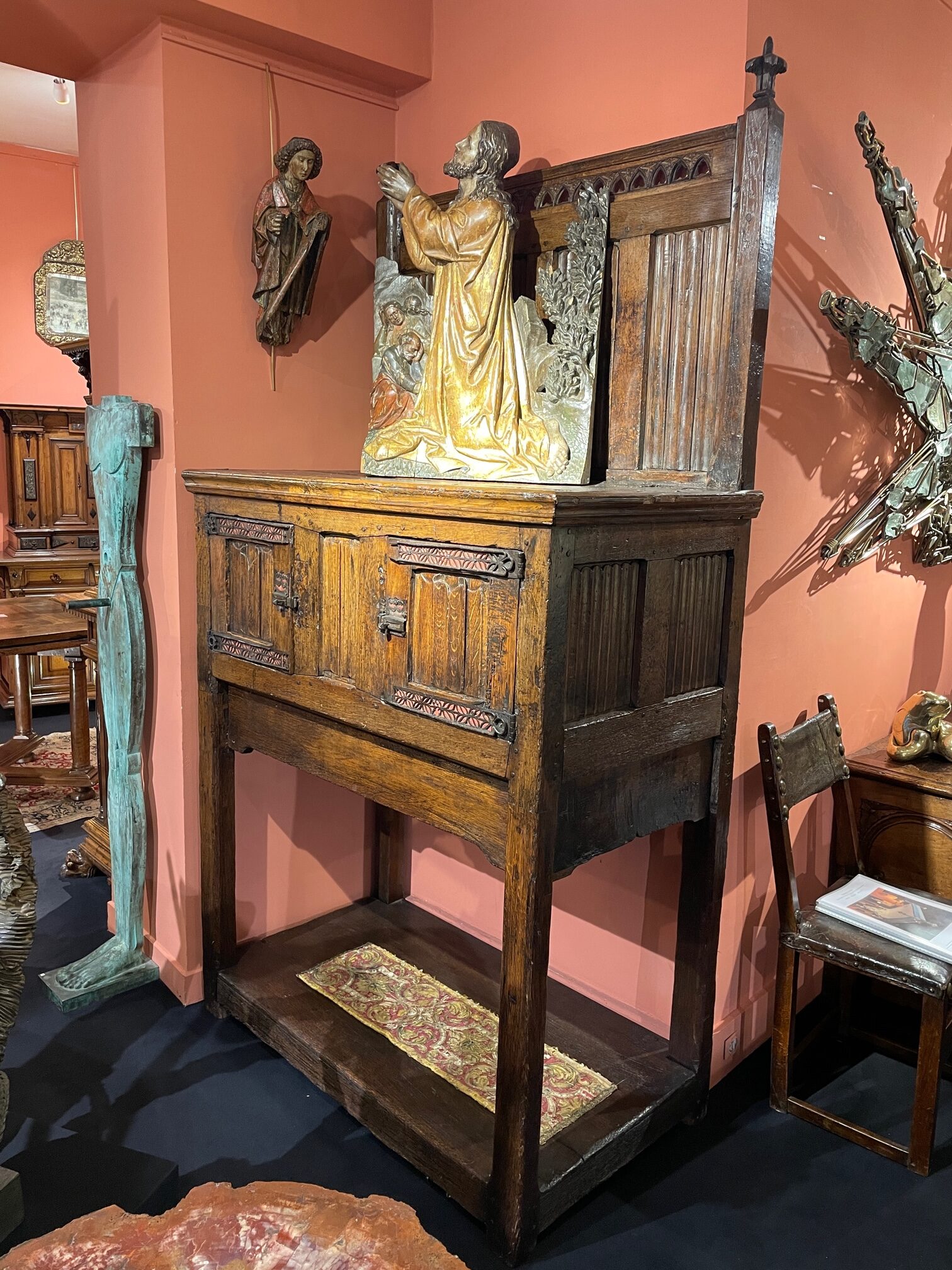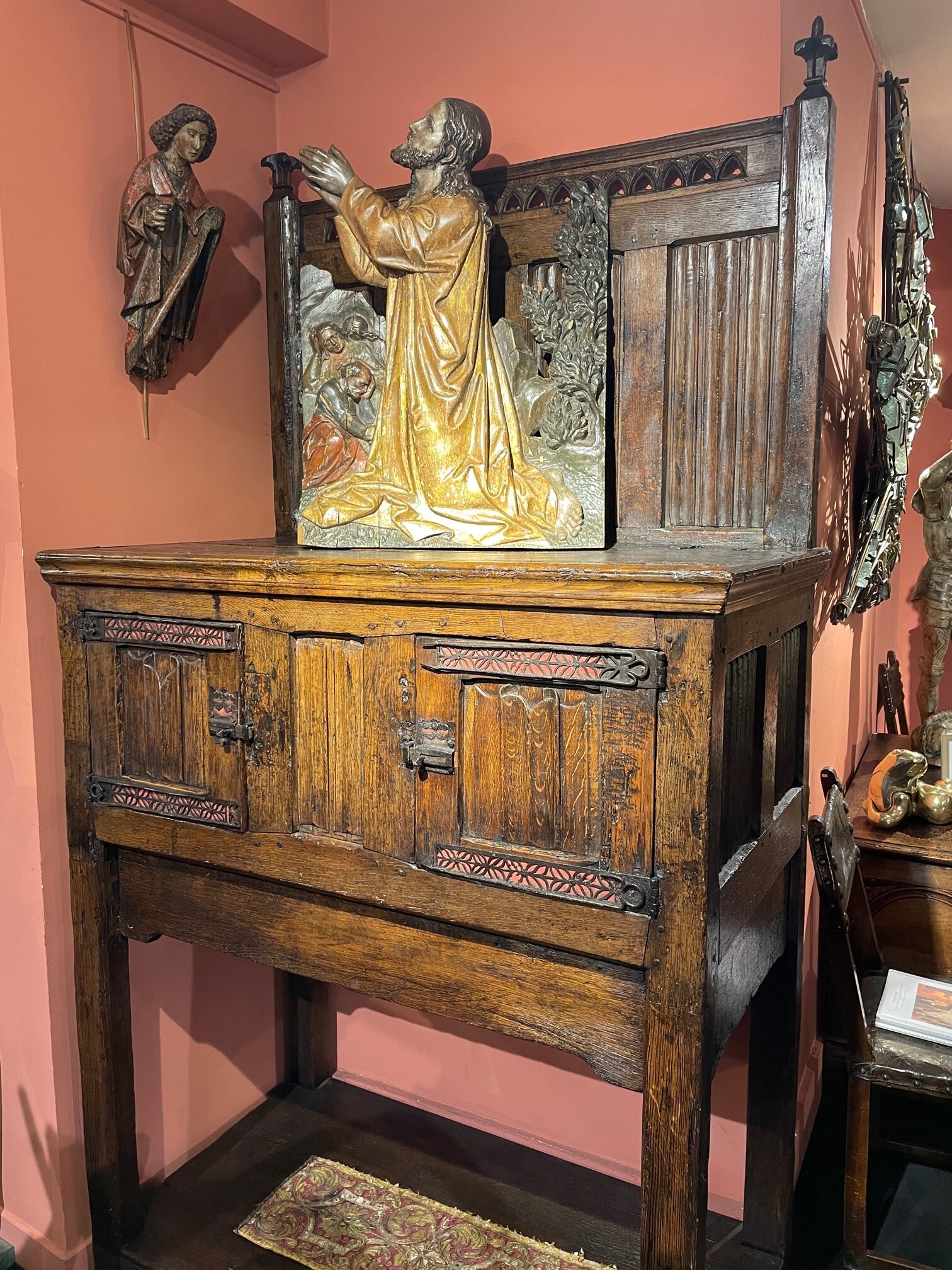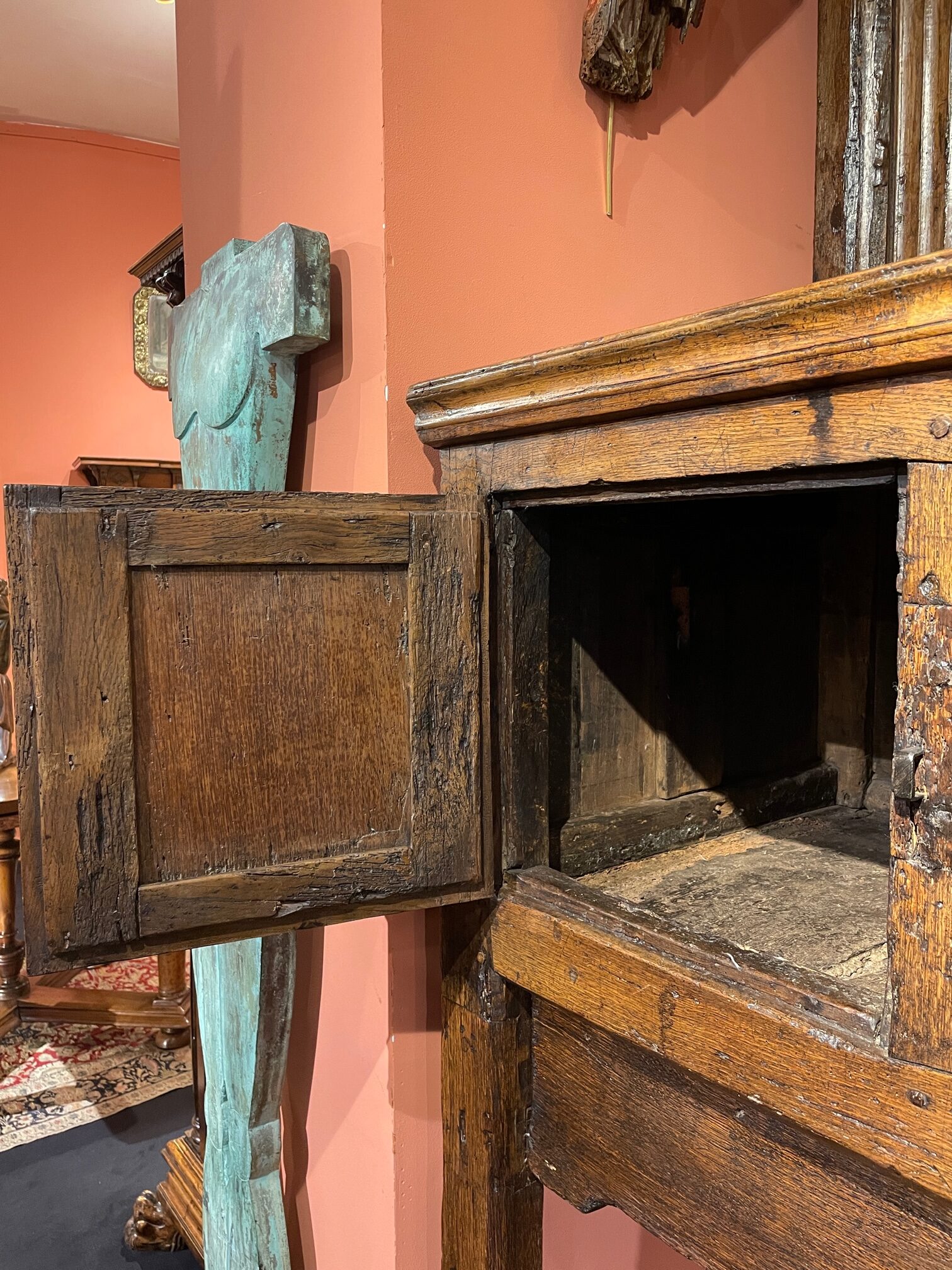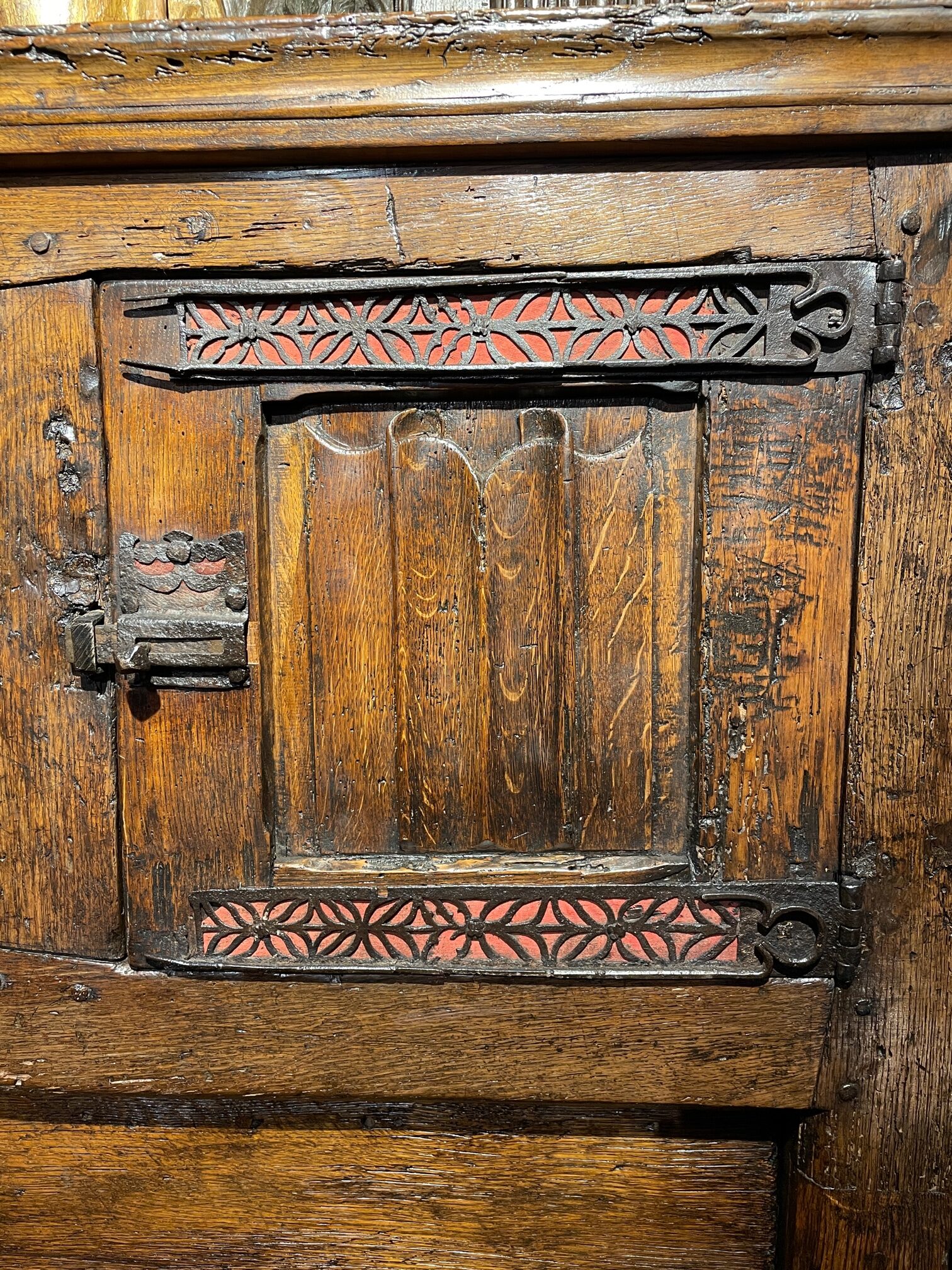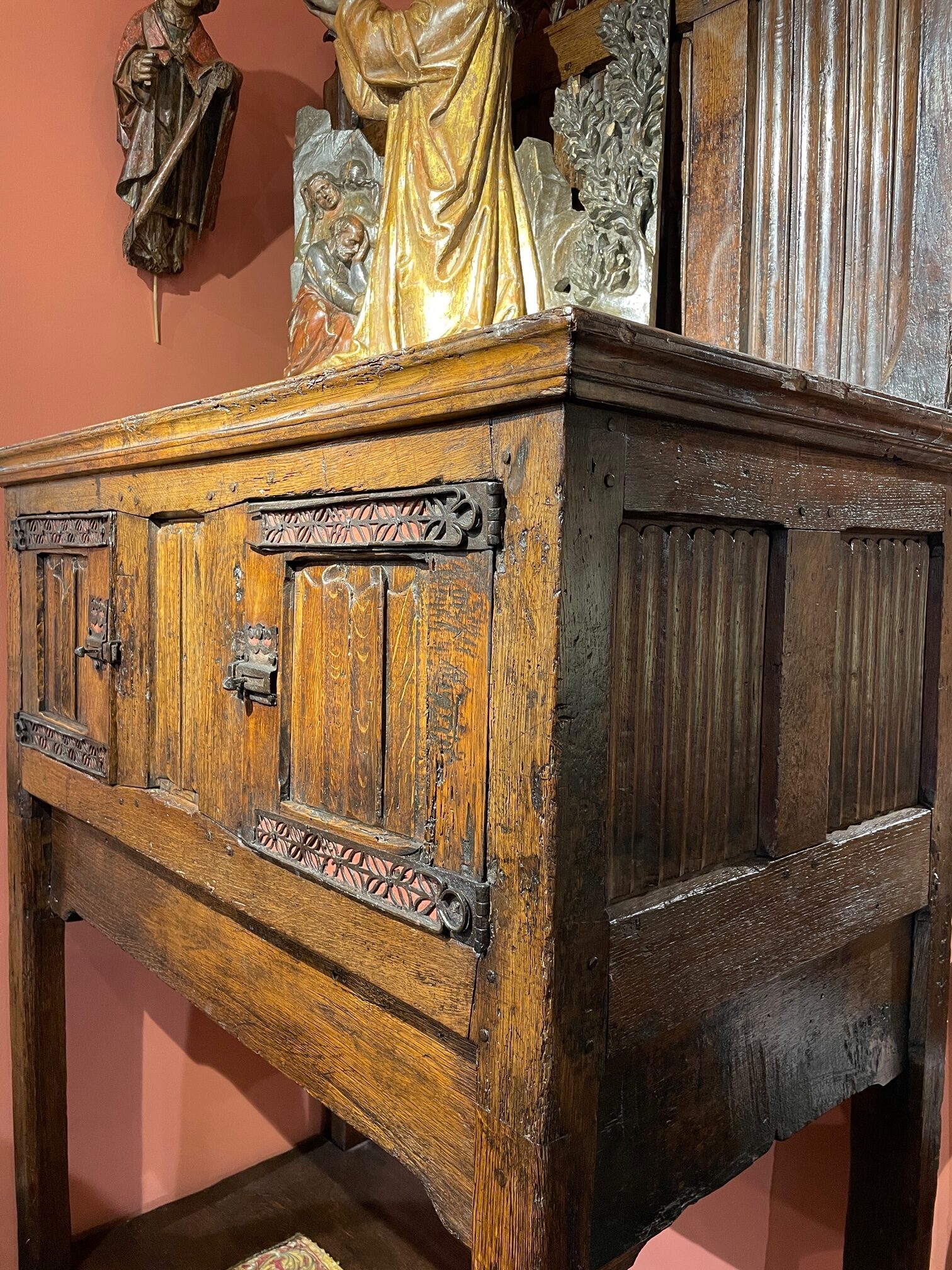Description
This type of furniture was called dressoir in French, from dresser ; to present. Indeed a cupboard like this one was meant to display precious items such as cristal dishes, gold or silver plates, candlesticks, etc. during grand events. Sometimes the cupboard would be topped with a canopy and the highest shelves would host the most precious items.
High dignitaries of the court could demonstrate their prestige as they would multiply the shelves. This habit prevailed well into the 16th century.
The state cupboard or dressoir de parade was generally placed in the main room of the house where receptions were held. Delicacies and precious dishes were presented there. It could also be used in the bedroom for the morning meals.
This exceptional and important cupboard presents two door-leaves and one drawer extending from one end to the other.
The lower part of the cupboard is entirely open.
The upper part comprises a drawer of which the surface has been left plain. It then opens with two door-leaves secured with the original finely chiseled hinges. Both doors close with an applied bolt lock. They are adorned with a decor of linenfold executed with dexterity. Each recessed panel is secured in a frame joined by mortise and tenon.
Between the door-leaves, another rectangular panel is enriched with a more complex and dense linenfold decor.
A moulding tops the upper part of the cupboard.
This cupboard still comprises its original head board. It is made of four recessed panels with an elongated linenfold decor. The board is toped by an open-worked frieze with flower motifs in the spandrels. The back jambs are crowned with pinnacles.
The sides of the cupboard show recessed panels with linenfold decors.
This cupboard is truly exceptional not only for the unity and quality of its decor, but also because of it remarkable integrity. Indeed, not only does the original base remains but the head board does as well, which is even rarer. It is embellished with harmonious and elegant motifs typical of the Gothic era such as linenfold or open-worked frieze reminiscing of Gothic window tracery. However the sculptor was gifted enough not to make it monotonous as they varied the design of the linenfold decor.

